
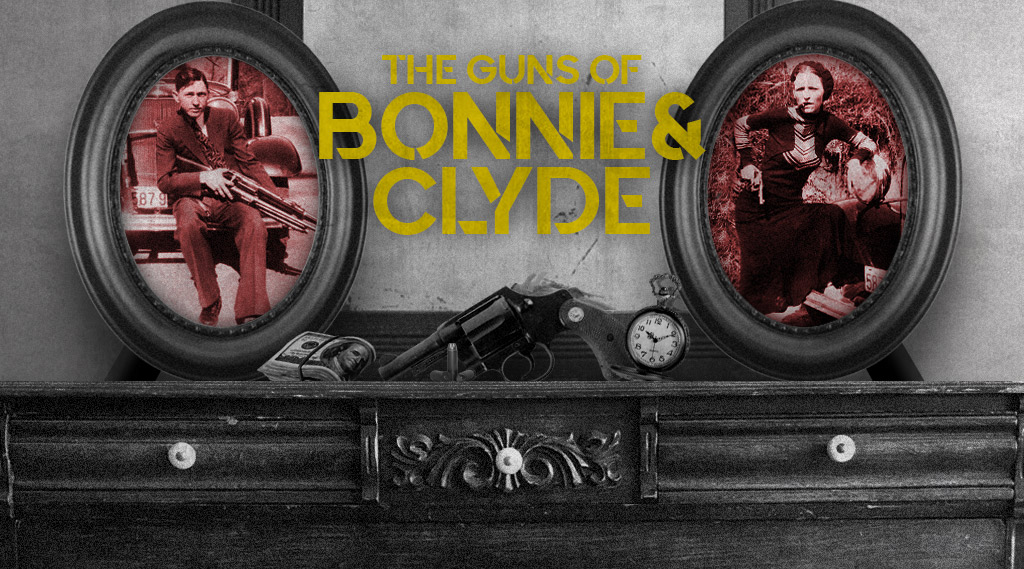
The Real Bonnie and Clyde
“Bonnie and Clyde were pretty lookin’ people. But I can tell you, people, they were the devil’s children.” Georgie Fame, The Ballad of Bonnie and Clyde
She was petite and pretty; he had boyish good looks. But their attractiveness belied a violent and criminal nature unmatched by any couple in American history. By the time the pair had met their violent end in 1934, Bonnie Parker and Clyde Barrow had been suspected or accused of several killings, robberies, kidnappings, and a laundry list of petty crimes.
What Kind of Guns Did Bonnie & Clyde Use?
Early Life and Crimes
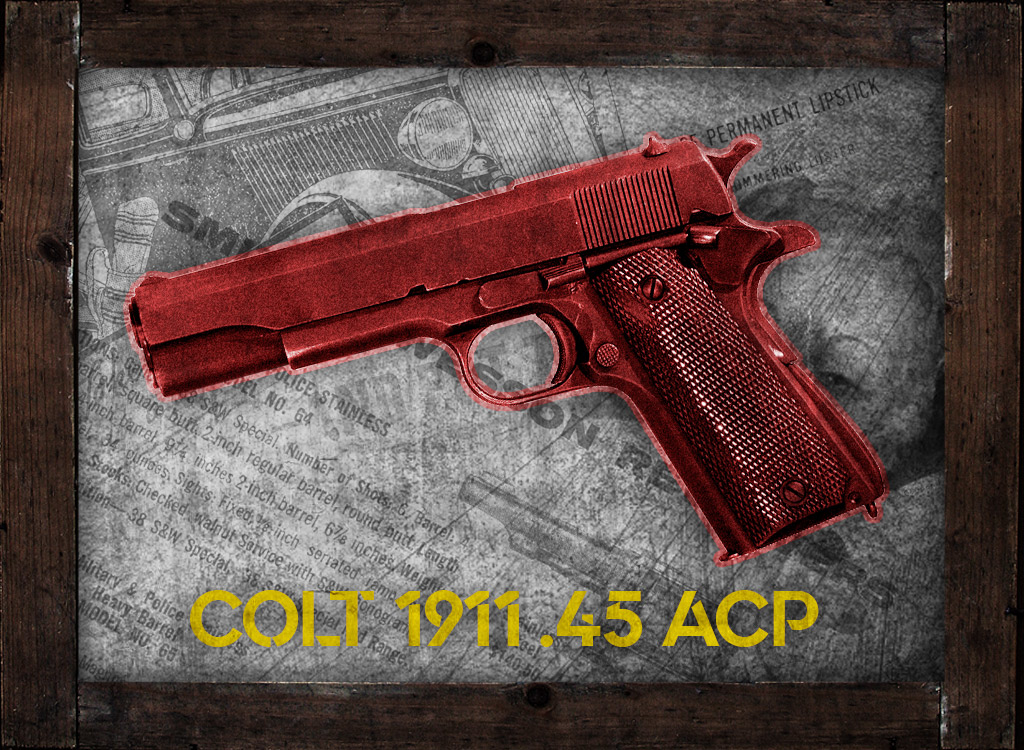
Clyde Barrow preferred carrying the Colt Model 1911 semi-auto pistol chambered in .45 ACP.
Nothing in Bonnie or Clyde’s backgrounds gave any indications of the extreme violence that would be their trademark as young adults.
Barrow was born into a poor farming family in Ellis County, Texas in 1909. His first arrest (for car theft) came when he was 17. Over the next few years, he would commit a variety of crimes that would eventually land him in state prison. He was paroled after two years and picked up where he had left off—robbing gas stations and grocery stores.
Bonnie Parker was born in Rowena, Texas in 1910. Although she was reportedly bright and a good student, Bonnie dropped out of school at the age of 15 and married her high school sweetheart. The marriage was short-lived, and when she met Barrow in 1930, she fell in love with him. Bonnie spent a few months in prison for a failed store robbery, so when they were both free of prison, they began their criminal careers in earnest.
Bonnie and Clyde: Folk Heroes or Villians?
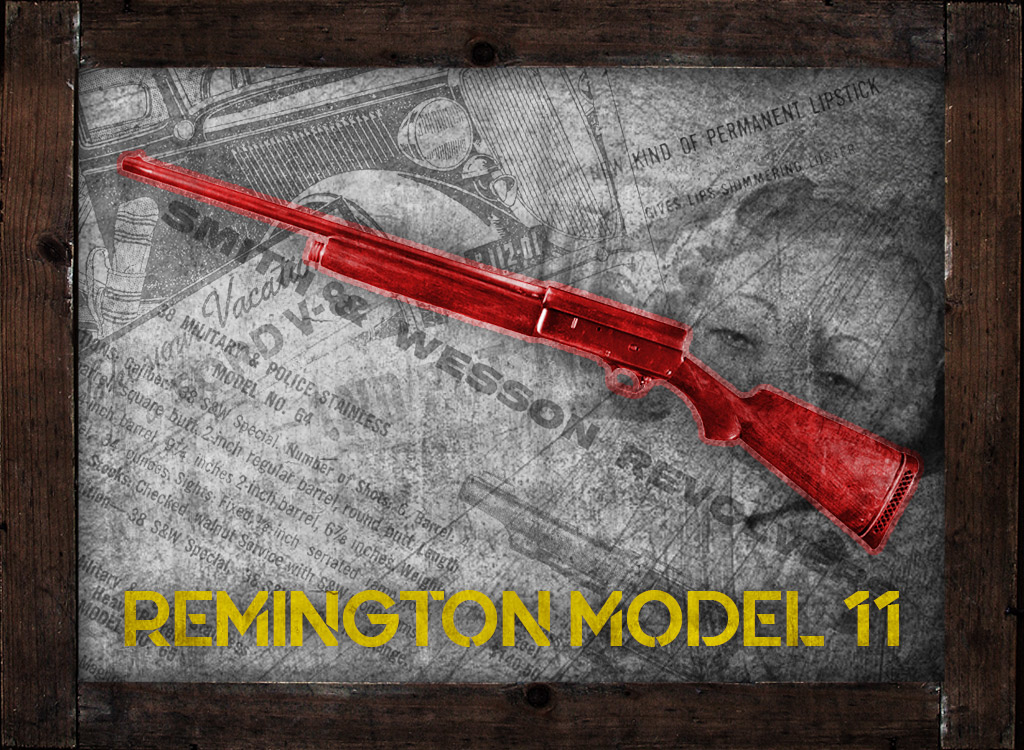
The Barrow gang loved the concealability of sawn-off Remington Model 11 shotguns during robberies.
While the crime spree lasted only two years, over that short period, the duo teamed with various accomplices to rob several banks and stores across a five-state area—Texas, Oklahoma, New Mexico, Louisiana, and Missouri. They were responsible for the deaths of thirteen law enforcement officers and civilians.
Early on, the couple enlisted several family members and friends into what would be called the Barrow Gang. Included in the gang were Barrow’s brother Buck and his wife, Blanche. W.D. Jones, Henry Methvin, and Raymond Hamilton, Barrow’s childhood buddy, were also among the criminals.
While much of the public in the mid-west acknowledged that the Barrow Gang was filled with dangerous outlaws, they also considered them to be folk heroes. After all, they reasoned, the gang was robbing those same banks that were foreclosing on so many Depression-era farmers. They saw Barrow and his cohorts as Robin-Hood figures instead of the cold-blooded killers they were.
Guns Of Bonnie and Clyde: Firepower Arsenal
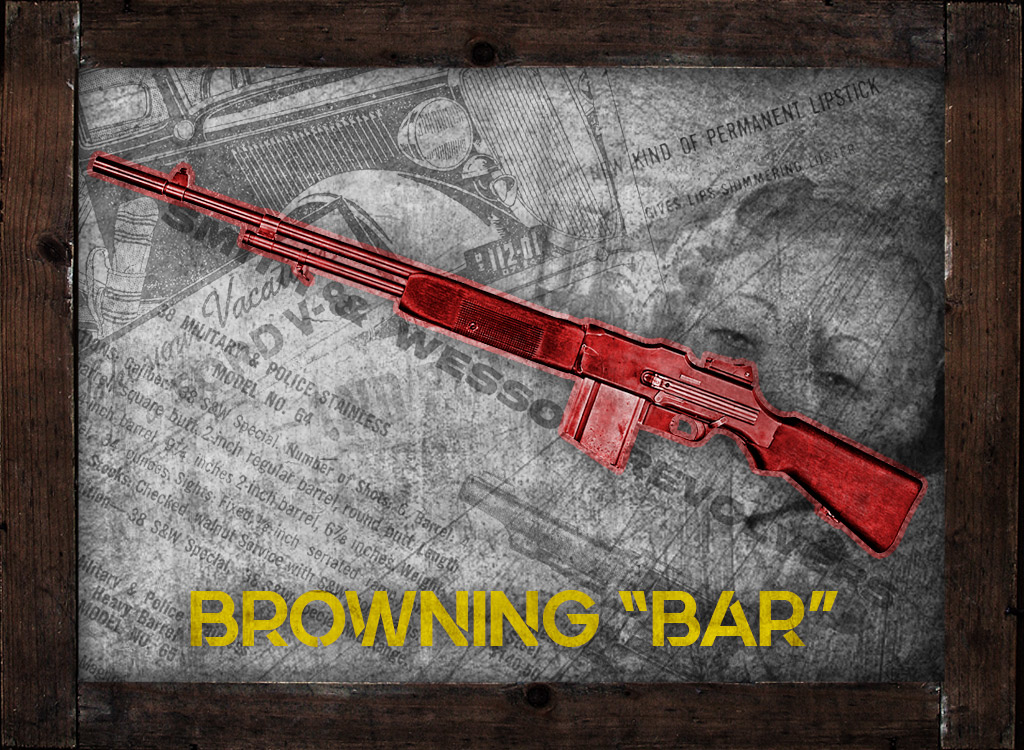
The Barrow gang daringly robbed armories to pick up powerful .30 caliber Browning Automatic Rifles (BAR).
The Barrow Gang got involved in two shootouts with police, escaping both because of the massive firepower they displayed. Clyde’s extensive weapon collection began when a friend gave him two Browning Automatic Rifles (BARs), which had been taken from a Missouri National Guard Armory. The BAR gave him the firepower he wanted, while the .30-caliber rounds it fired could penetrate the body of an automobile.
Barrow would go on to rob two armories himself, adding more BARs, shotguns, Colt 1911 pistols, M1917 revolvers, and plenty of ammunition to his collection. He and his gang also added weapons by robbing hardware stores and taking guns from police and bank guards they had either killed or kidnapped.
While Clyde favored the BAR—and got the lion’s share of press attention from it—Bonnie was never far from her shotgun. Her choice was a Remington semiautomatic short-barrel Model 11 with the stock cut off just behind the pistol grip. The couple had several photos taken with her wielding the shotgun playfully.
Bonnie and Clyde Death: Sudden and Brutal
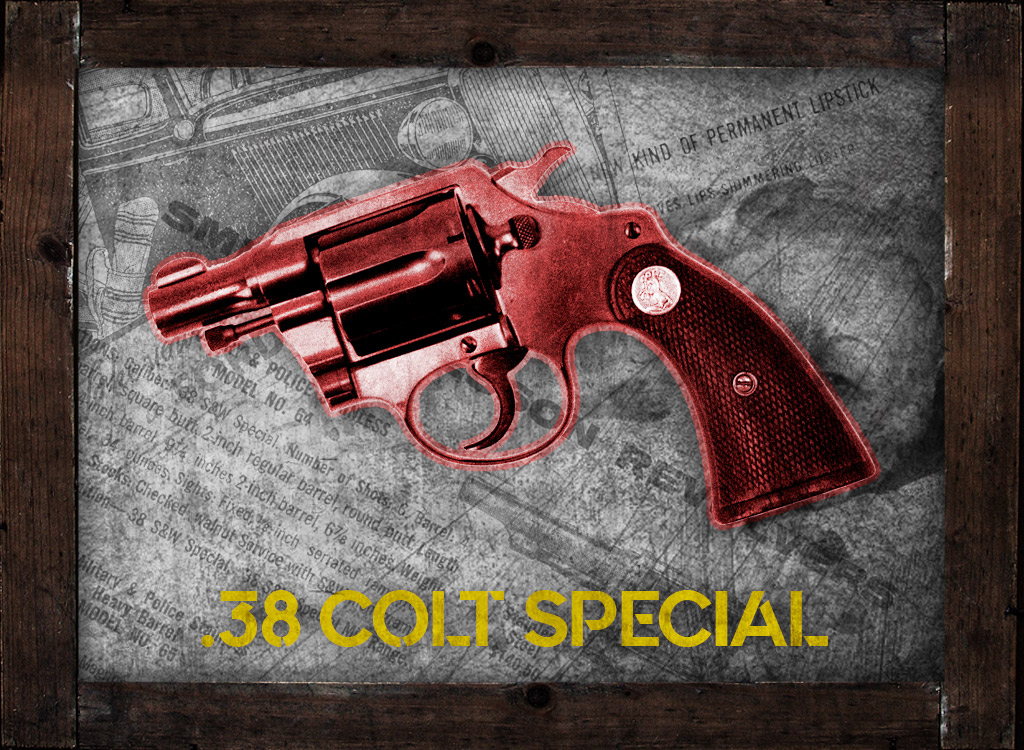
Legend has it, Bonnie concealed a .38 Colt Detective Special, taped to her thigh when authorities ambushed and killed her.
“The future’s uncertain and the end is always near.” Jim Morrison, The Doors
Bonnie and Clyde were living on borrowed time. The Texas Department of Corrections had hired former Texas Ranger Captain Frank A. Hamer to hunt down the Barrow Gang. Hamer then gathered two Dallas County Sheriff’s Deputies, a Bienville Parish Sheriff and his deputy, plus another retired Texas Ranger, Maney Gault, to assist him.
Like many of the gangsters from the 1930s, Bonnie and Clyde’s relatively short crime spree was about to come to a bloody end. After studying Barrow’s movements carefully, Hamer was able to predict where the outlaw would travel next. The ex-Ranger surmised that the gang was due for a visit to Henry Methvin’s father near Bienville Parish, Louisiana and set a trap for them.
Hamer and Gault approached Ivy Methvin with a proposition: Help us to kill Bonnie and Clyde, and we’ll go easy on your son. He agreed, and set up the ambush on May 23, 1934, along a country road. Hamer asked Ivy to park his truck along the route. He jacked up the truck with the wheel removed. When Barrow slowed down to ask if he could help his friend’s father, the lawmen opened fire.
The Guns That Killed Bonnie and Clyde
Frank Hamer never even considered the possibility of taking Parker and Barrow alive, so he armed himself with a .30-caliber Remington Model 8 rifle. His men wielded a .35-caliber Model 8, a Model 94 Winchester, a .25-caliber Model 8, and a BAR. Some of them were armed with Remington Model 11 shotguns. And all of them carried handguns.
The first shots from the automatic rifles struck Clyde in the head, and he died instantly. The men emptied their rifles and continued to fire on the car with the shotguns. As the vehicle continued to drift down the road, the men also used their pistols as the smoking car ran into a ditch.
Hamer and his men had fired more than 130 rounds into the 1930 Ford. 17 of them struck Bonnie while another 27 hit Clyde. The guns of Bonnie and Clyde were recovered. Bonnie’s Model 11 shotgun was on the floor near her feet. She taped a .38 Colt Detective Special revolver to her thigh, and the agents found a Colt .25 automatic in her purse. Some say Clyde was carrying a 1911 pistol, but others insist it was a .45-auto M1909 Colt revolver.
The Legend of Bonnie and Clyde
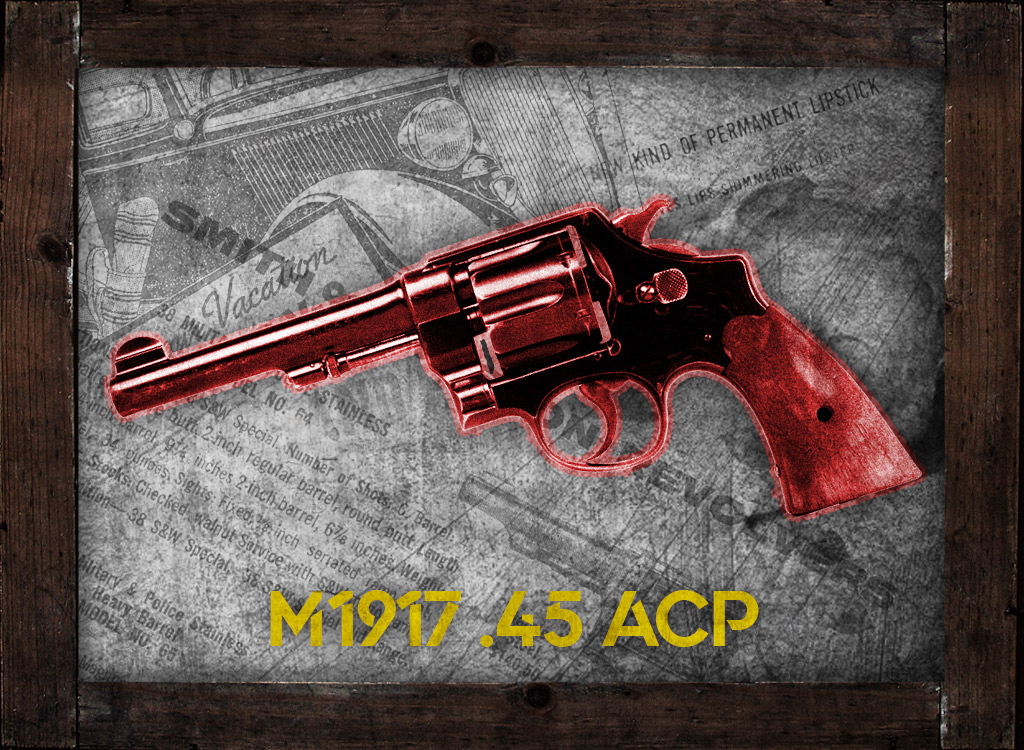
The six-shot M1917 revolver in .45 ACP served as a powerful handgun in both World Wars.
“They both robbed and killed until both of them died. So goes the Legend of Bonnie and Clyde.” Merle Haggard, The Legend Of Bonnie and Clyde
Bonnie and Clyde remain alive today in some ways. 85 years after their demise, thanks to the movies, books, songs, and even a Broadway show dedicated to their story. And most of these glorify two ruthless killers who were seemingly bereft of conscience and never hesitated to murder those who stood in their way.
Part of the continuing obsession with the pair is explained by the producers of the latest Bonnie and Clyde film. The Highwaymen, a Netflix production, tells their story from the perspectives of Frank Hamer and Maney Gault. Says screenwriter John Fusco, “Nothing was as engaging as Bonnie and Clyde. The media glamorized the pair because of the Bonnie element — lovers on the run outside of society just really attracted the public.” And it still does today.


